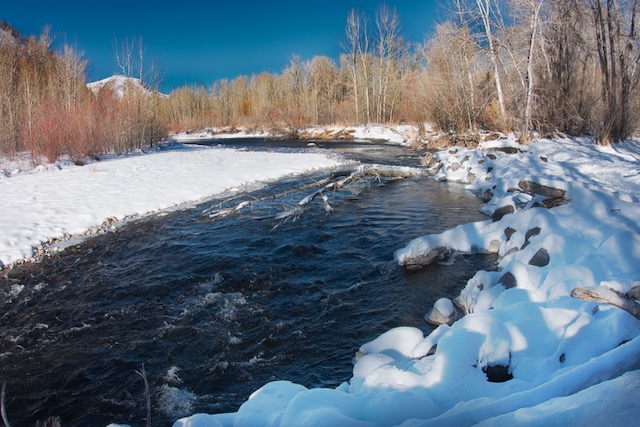
The Big Wood River needs help. Idaho Fish and Game’s Magic Valley regional fisheries manager told the Blaine County Commission early this month that there are too many too-small rainbow trout in the Big Wood River, the Express reported. This is a wake-up call for the entire Wood River Valley community.
Our three organizations are committed to the Big Wood River. Our members and supporters fish and explore the river on a daily basis. They know first-hand the deterioration in the fishery that has occurred in recent years. Fishery health is the canary in the coal mine for the health of cold-water mountain rivers.
Much is unknown about the cause(s) of the Big Wood River missing larger fish. It could be related to water quality; water quantity; loss of woody complexity and floodplain habitat; chemical runoff; a decline in the insect population essential to the river’s food chain; or a combination of these factors.
Whatever the cause, we know the solution: better habitat, cleaner water, assured water flows and unrestrained river flows allowing the river to access its flood plain. And we have a map to guide us: Blaine County’s 2020 Big Wood River Atlas, which can be accessed at co.blaine.id.us/509/Big-Wood-River-Atlas-2020.
The atlas describes both best-practices and the existing hydrology, morphology and other problems along the entire river, reach by reach. The county is committed to keeping the atlas up to date, with the help of Project Big Wood.
We all have observed the deteriorating river habitat: extensive residential and commercial development in the flood plain; hardening of the riverbanks to confine the river to its existing channel; removal of wood and habitat complexity from the river and riverbanks; destruction of the vegetation in the riparian zone; and fertilizer and chemical runoffs.
The good news is that Project Big Wood, the Wood River Land Trust and Idaho Fish and Game are working hard to document the decline in fish and insect populations and to find the cause(s). Our volunteers assist with field surveys, monitoring of instruments, maintenance of river accesses, planting of riparian plants and rescues of fish caught in irrigation diversions.
Both Project Big Wood and the Wood River Land Trust are working together to explore opportunities identified by the Big Wood River Atlas to restore the river by reopening flood plains; opening side channels for better habitat during high flows; removing riprap (rock armoring) structures; and restoring riparian vegetation. This is expensive work that requires both private and government funding and the cooperation of the stream-side landowners.
Our organizations are cooperating with local citizen groups and student scientists to monitor water flows and quality and survey insect populations.
And Idaho Fish and Game is conducting fish surveys to monitor fish population trends and examine possible changes in fishing regulations.
So, we are optimistic. The river, in the words of Project Big Wood, can be “mended.” This essential engine of our local economy must be restored. This must be an “all hands” effort across all the residents of the valley. To get there, we need aggressive regulation by local jurisdictions, the best engineering practices for any activity that affects the river, and all community members to remind each other that the river belongs to us all. It is a marvelous gift of nature that symbolizes our community, drives our economy and maintains our unique environment.
And the fish will prosper.
__________________________________________________________________________________________
Nick Miller is the president of the Hemingway Chapter of Trout Unlimited, a national stream conservation nonprofit group. Amy Trujillo is the executive director of the Wood River Land Trust, a Hailey nonprofit that helps preserve the Big Wood River and its tributaries. Amanda Bauman is the executive director of Project Big Wood, a Ketchum nonprofit focused on restoring its namesake river.
